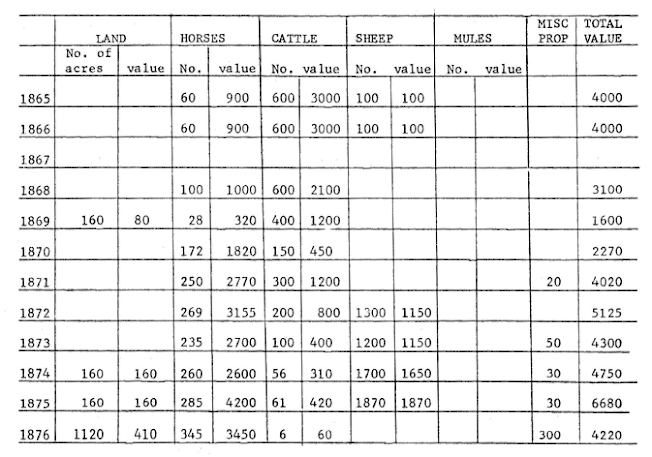Benavides: The Town And Its Founder, 1880 (Part 3)
by Arnoldo De Leon
 |
| Arnoldo De Leon |
Distinguished Professor of History Emeritus, Angelo State University
Despite their role in the Texas Revolution, however, the Benavides family encountered the same fate as other Tejanos faced once the fighting ended. Suspected of aiding Santa Anna and being involved in the massacre of Goliad and the Battle of the Alamo, many Tejanos had been chased from their homes and ranches. Some fled to the Rio Grande Valley, where the settlements established by Jose de Escandon in the 1740s and 1750s provided them refuge. Others fled to Louisiana to escape vengeful white men. Among those leaving for Louisiana were the four Benavides brothers who had helped found Victoria--Placido, Eugenio, Ysidro, and Nicolas.
It was in Louisiana that Cayetana Moreno Benavides, the wife of Ysidro, gave birth in 1836 to Placido, the future founder of Benavides, Texas. After two years in exile, the Benavideses (except their brother Placido who had died in Opelousas, Louisiana, in 1837) returned to what was left of their lands. Ysidro Benavides and his family settled down on their ranch in modern-day Calhoun County along Chocolate Creek.5What happened to Ysidro Benavides and his family after their return remains obscure, but it is certain that Señora Benavides suffered a great tragedy in 1842 when her brother Regalado Moreno was murdered in cold blood along with six other Mexicans by the cut-throat Mabry "Mustang" Gray near Goliad.6
Sometime in the mid-1850s, notes Leopoldo Benavides of Hebbronville, Texas,7 the young, unmarried, Louisiana-born Placido Benavides, his mother Cayetana, and his brother Ysidro, made their way into South Texas and towards Rancho de Trinidad. For some time, the widow Cayetana had wanted to move nearer to her native Mexico and closer to her brother, Santos Moreno, who owned Rancho de Trinidad in Nueces County. Moving all their belongings from Victoria seemed the logical thing to do. Once at his Uncle Santos' ranch, the enterprising Placido began acquiring land in the area, which eventually became the site of the town named after him.[8]
The Civil War interrupted Placido's ranching interests. Texas had joined the Confederacy, and while most Tejanos sympathized with the Union, others enlisted in the Confederate columns. Like his celebrated relatives from Laredo, Santos, and Refugio Benavides, Placido opted to fight in the Confederate Army.[9] Not until the civil war ended did the area that is now Duval County experience any major growth. The Texas Almanac of 1867, for example, still reported the area as sparsely populated.
According to the Nueces County tax rolls, Placido Benavides' taxable belongings between 1865 and 1876:
Yet, things were going well at Placido’s Rancho Palo Alto (so named after the one the family left back in Victoria).11 The Nueces County tax rolls show that in the years 1865 and 1866, Placido was a fairly successful stockman paying taxes on a herd of sixty horses valued a $900, six-hundred cattle valued at $3,000, and one-hundred sheep valued at $100. The 1869 tax records for the first time reveal Placido paying taxes on 160 acres of land. The value of his property amounted to $1,600. It included twenty-eight horses valued at $320, four-hundred cattle at $1,200, and his real estate worth $80.12 His brother, Ysidro, was worth $80 that year according to the same records, his entire holdings consisting of 160 acres.13
Placido Benavides did well for himself in the 1870s. His worth doubled from $2,270 in 1870 (one hundred seventy-two horses at $1,820; and one hundred fifty cattle at $450) to $4,220 in 1876 (1,120 acres of land worth $410; three hundred and forty-five horses worth $3,450; six cattle worth $60, and miscellaneous property in the amount of $300).14
Gone were the tragic days his father and uncles had seen in Victoria. Placido had come a long way since starting anew in the chaparral of South Texas.15
In 1875, a group of ambitious businessmen in the Corpus Christi region decided to tap the Mexican trade by building a railroad to Laredo. Rail track cut through the chaparral country for the first time, providing the people of Duval with new ways of moving cattle, importing needed goods, and going from one place to another. It passed directly through Placido Benavides' Rancho Palo Alto.16
In 1880, when the railroad was completed, Placido was a prosperous ranchman. The Duval County census for that year showed him at the head of a household of twelve people, including his wife, Romalda, and five children (Nicolas, 12; Maria, 9; Roque, 5; Ysidro, 3; and Lorenzo, 1), his aged mother Cayetana (then eighty years old), two house servants and two laborers.17
------------------------------------------------
10 cited in Lynch, The Duke of Duval, p. 8.
11Benavides interview, March 17, 1980, Hebbronville, Texas.
12 Unless otherwise stated, all statistics come from the Nueces County tax rolls, microfilm copies of which are available at the Angelo State University Library, San Angelo, Texas. Because Duval County was not organized until 1876, the parent county, Nueces, kept the tax records. Why Placido Benavides' acreage is not recorded before 1869 could not be determined.
13 See Appendix B for a biographical sketch of Ysidro Benavides.
14, 15 unfortunately, the Duval County tax rolls for the period 1876-1887 were unavailable at the Angelo State University Library at the time of this research. They are available in microfilm at the Texas State Library, Austin, Texas.
16 Benavides interview, March 17, 1980, Hebbronville, Texas.





Comments
Post a Comment
We welcome constructive comments and invite you to share your own research if you would like. Thank you.